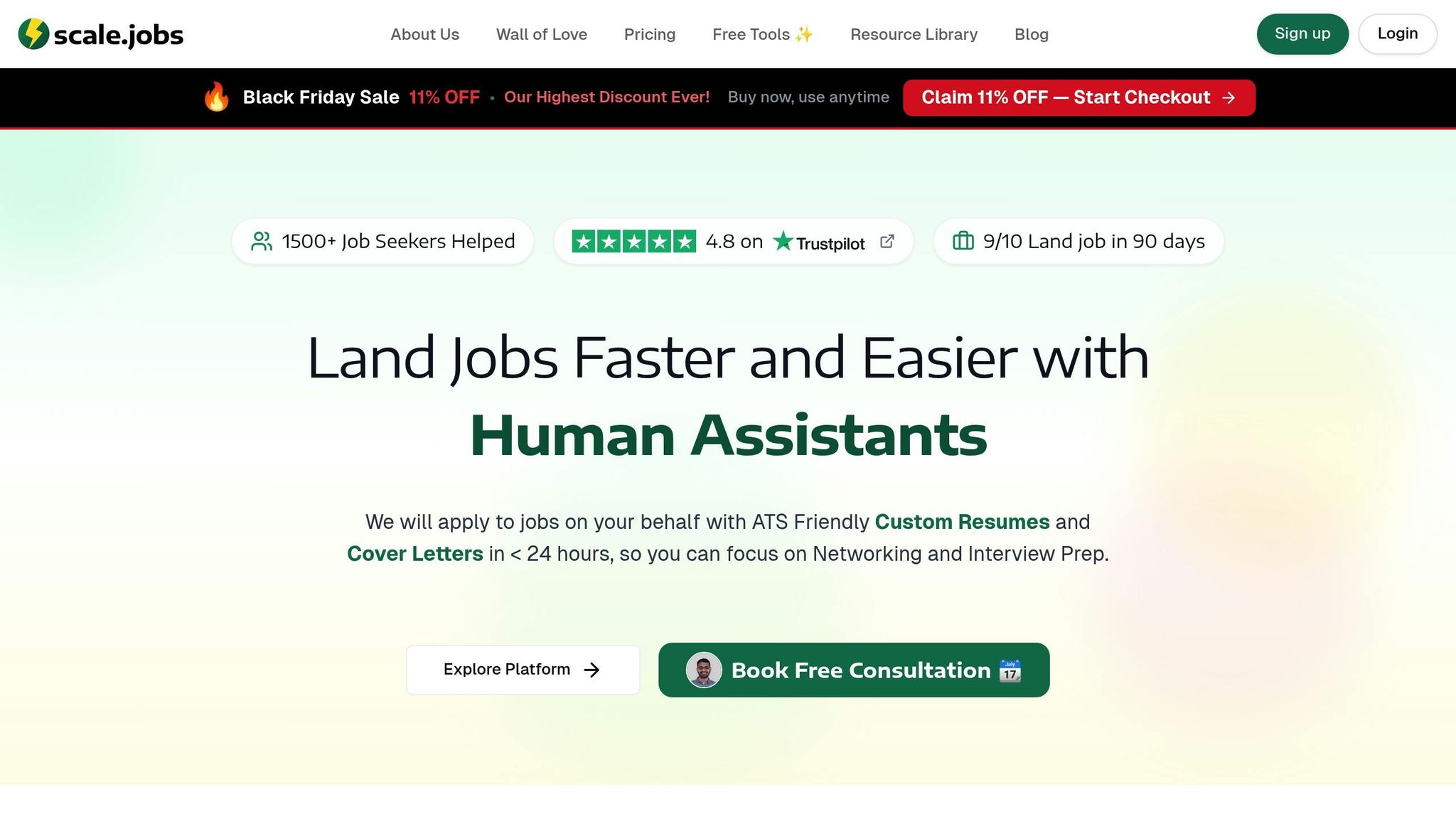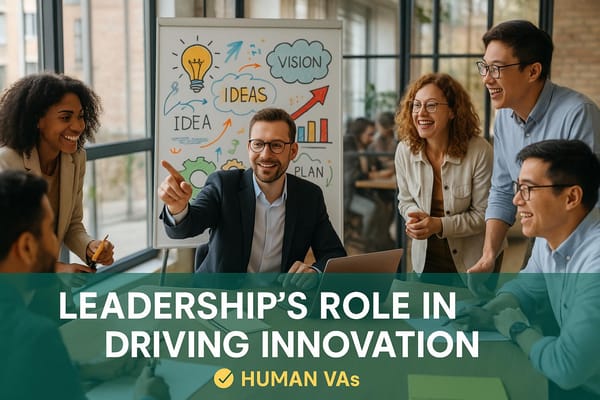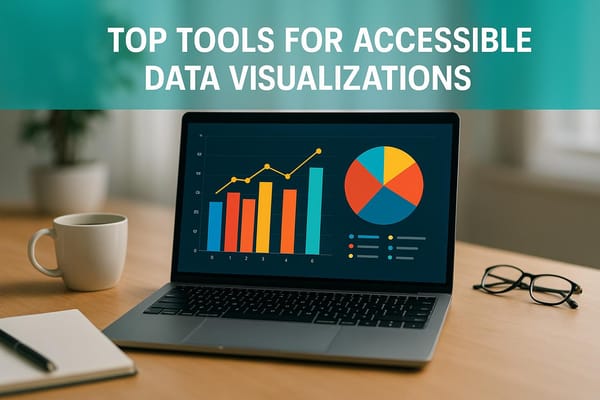Age Bias in Training: Common Myths Debunked
Challenging age bias in workplace training reveals the importance of personalized approaches for all generations, enhancing collaboration and performance.

Age bias in workplace training hurts both employees and organizations. Misjudging someone's learning ability based on their age leads to missed opportunities, reduced morale, and wasted potential. Here's what you need to know:
- Age bias affects all generations: Older employees are often seen as resistant to change, while younger ones may be considered inexperienced.
- Training programs should focus on individual needs: Stereotypes harm everyone. Tailoring training to personal learning styles ensures better outcomes.
- Cross-generational learning benefits everyone: Older workers bring experience; younger workers contribute fresh perspectives. Together, they strengthen teams.
- Myths hold back progress: Beliefs like "older workers can't learn new skills" or "younger employees are naturally more creative" are unfounded.
Organizations that address these biases see better employee retention, knowledge sharing, and overall performance. The solution? Age-neutral training programs that prioritize skills, not stereotypes.
Your Organization’s Age Bias is Costing You, With Maureen Wiley Clough
Common Age Training Myths Debunked
Misconceptions about age and training can negatively impact employee morale and lead to misguided decisions about workforce development. Let’s clear up some of these myths and uncover the real value of training across age groups.
Myth 1: "Older Workers Can't Learn New Skills or Technology"
The idea that older employees can’t adapt to new skills or technology is outdated. When training is tailored to their pace and preferred learning styles, older workers excel at picking up new tools and processes. Their methodical approach often leads to deeper understanding and long-term retention, especially when training programs focus on individual needs rather than stereotypes.
Myth 2: "Training Older Employees Is Not Worth the Investment"
Investing in training for older workers pays off in more ways than one. These employees bring years of experience and institutional knowledge, which they can pass on to others through mentorship. Their ability to guide and support younger colleagues helps reinforce organizational culture and values, making the investment in their development both practical and rewarding.
Myth 3: "Younger Employees Are More Adaptable and Creative"
While younger employees may quickly adapt to new tools, older workers bring a wealth of practical insights and problem-solving skills. The truth is, innovation thrives when teams blend the fresh perspectives of younger employees with the seasoned judgment of older ones. This mix fosters well-rounded solutions and enhances creativity across the board.
Myth 4: "Different Generations Need Separate Training Methods"
Training doesn’t need to be divided along generational lines. Instead, it should cater to individual learning preferences, which often cut across age groups. Programs that combine various teaching methods - like visual aids, hands-on activities, and group collaboration - are more effective at engaging everyone. This approach not only meets diverse needs but also encourages teamwork and inclusivity in the learning process.
Benefits of Age-Diverse Training Programs
Age-diverse training programs can enhance performance, spark creativity, and improve employee satisfaction. Companies that invest in training for all age groups often see better results and higher levels of engagement across their workforce.
Research vs. Common Stereotypes
Studies reveal that the design and quality of a training program matter far more than the age of its participants. Contrary to stereotypes, older employees frequently bring a wealth of experience and a thoughtful perspective when learning new skills. These insights highlight the value of well-designed programs that encourage learning across all generations.
Building Cross-Generational Learning
Cross-generational training creates opportunities for reverse mentoring. For example, younger employees might share their digital knowledge, while senior staff pass on their industry expertise. This mutual exchange fosters better teamwork, communication, and a stronger sense of unity, while also ensuring that knowledge is shared throughout the organization.
Improving Organizational Performance
Inclusive training programs help retain talent, cut down on turnover costs, and bring together diverse viewpoints to solve problems creatively. When employees of all ages feel their growth is prioritized, companies gain a more engaged workforce and the ability to adapt more effectively to changing market demands.
Best Practices for Eliminating Age Bias in Training
Creating an age-diverse training environment is a step in the right direction, but taking it further with thoughtful practices can help remove lingering biases and build truly inclusive learning spaces. By focusing on individual needs instead of age-based assumptions, companies can design programs that benefit everyone.
Here are some effective strategies for crafting inclusive training programs:
- Tailor training to individual learning styles: Focus on personal preferences rather than relying on generational stereotypes. This ensures everyone can engage with the material in a way that works best for them.
- Introduce cross-generational mentorship: Encourage employees of different ages to share their knowledge and expertise. This two-way learning approach benefits everyone and strengthens team dynamics.
- Use neutral, inclusive language in materials: Training content should reflect a variety of age groups and avoid reinforcing outdated workplace stereotypes.
- Continuously evaluate training outcomes: Regularly review programs to spot and address any unintentional biases that may have crept into the design or delivery.
- Ensure equal access to opportunities: Make sure all employees, regardless of age, have access to advanced certifications, leadership programs, and other career growth resources.
Scale.jobs vs Find My Profession: Why You Should Switch to Human-Powered Job Applications

When it comes to job search platforms, one size doesn’t fit all - especially when professionals at different career stages face unique challenges. Traditional platforms often overlook these nuances, leaving job seekers with limited support. While Find My Profession uses a subscription-based model, Scale.jobs takes a human-powered, flat-fee approach, breaking down barriers for job seekers of all ages and experience levels.
Scale.jobs stands out by offering a transparent, flat-fee model that eliminates recurring costs and speeds up the job search process. With over 1,500 satisfied users, the platform boasts impressive results: 9 out of 10 job seekers land a position within 90 days, and 70% of users secure refunds when they find a job before using all their credits. On average, Scale.jobs reduces a typical five-month job search to just 1–3 months, with users reporting a 40% cut in the time spent job hunting.
Here’s how it works: Human virtual assistants craft ATS-optimized resumes and cover letters tailored to each job posting. You’ll receive real-time updates and verifiable work logs, ensuring full transparency. This hands-on approach delivers faster results and peace of mind, backed by a 90% success rate within 90 days and a clear refund policy.
Scale.jobs vs Find My Profession vs TealHQ: Feature Comparison

| Feature | Scale.jobs | Find My Profession | TealHQ |
|---|---|---|---|
| Pricing Model | One-time flat fee ($199–$1,099) | Monthly subscription ($197–$397/month) | Freemium + subscription ($79/month) |
| Human Support | Dedicated VAs + WhatsApp updates | Limited human interaction | AI-focused with minimal human support |
| Application Method | Hand-submitted by humans | Automated or semi-automated | User submits applications |
| Refund Policy | Unused credits refunded | No refunds for unused time | No refund policy |
| Speed | 24-hour custom documents | 3–5 business days | Instant AI generation |
| Success Rate | 90% land jobs in 90 days | 98% success in 6+ months | No published success metrics |
While Find My Profession claims a 98% success rate over six months, their subscription model can cost between $1,200 and $2,400 - with no refunds for unused time. Scale.jobs, on the other hand, combines faster results with a refund policy, making it a smarter choice for job seekers looking for both efficiency and financial flexibility.
Supporting Job Seekers at Every Career Stage
Just as inclusive training programs can elevate workplace performance, Scale.jobs provides tailored support to job seekers across all career stages. Recent graduates gain access to tools like portfolio generators and interview predictors, while seasoned professionals benefit from personalized services that highlight their experience without running afoul of ATS filters.
The platform caters to a wide range of users, including:
- New graduates breaking into competitive industries
- Professionals needing quick re-employment after layoffs
- Job hoppers looking for better opportunities
- Students seeking internships
- Immigrants navigating job searches and visa requirements
For those concerned about age bias, Scale.jobs ensures compatibility with both corporate ATS systems and niche job boards, giving your applications the best chance to reach the right hiring managers. Its one-time pricing structure eliminates ongoing subscription fees, allowing you to focus on networking and interviews while your dedicated assistant handles the application process.
On top of its paid services, Scale.jobs offers free tools like ATS resume checkers, salary predictors, and interview question generators, making valuable resources accessible to everyone. These tools complement its human-assisted services, giving job seekers a head start even before committing to a paid plan.
This approach underscores the importance of providing inclusive, results-oriented support for job seekers at every stage of their journey.
Conclusion: Moving Forward with Age-Inclusive Training
Breaking free from age-related stereotypes opens the door to untapped potential within your workforce. By shedding these outdated myths, organizations can create spaces where employees of all ages feel empowered to learn and grow.
Age-diverse teams offer a unique advantage. Older employees bring a wealth of institutional knowledge and refined problem-solving abilities, while younger team members contribute fresh ideas and digital expertise. Together, these perspectives fuel innovation and mutual growth.
Age-inclusive training focuses on personal learning styles and career aspirations rather than grouping employees by age. Offering varied formats - like hands-on workshops, online courses, or hybrid options - ensures everyone can engage in ways that suit them best. Additionally, cross-generational mentorship programs foster meaningful knowledge exchange, benefiting both mentors and mentees.
This inclusive mindset naturally extends to broader career support. Just as training programs adapt to individual needs, job search platforms must address the diverse challenges faced at every career stage.
For example, Scale.jobs stands out by offering tailored support for job seekers at any point in their professional journey. Whether you're a new graduate entering a tough job market, an experienced professional facing unexpected changes, or someone navigating visa-related hurdles, Scale.jobs provides personalized assistance. Their flat-fee model removes financial barriers often imposed by subscription-based services, and their transparent refund policy underscores a commitment to fairness and accessibility. This human-centered approach ensures job seekers receive the attention they deserve.
FAQs
What are some effective ways organizations can create age-neutral training programs to reduce age bias?
To design training programs that work well for employees of all ages, organizations should aim for inclusivity and flexibility. Start by creating content that speaks to everyone - steer clear of stereotypes or assumptions about what different generations might prefer. Instead, use a variety of examples and case studies to make the material relatable across the board.
It’s also a good idea to offer training in multiple formats, like in-person workshops, online modules, or self-paced options. This kind of flexibility helps cater to different learning preferences and busy schedules. On top of that, mentorship programs can be a game-changer - pairing employees from different age groups allows them to exchange knowledge and viewpoints, building mutual respect and teamwork.
By following these steps, organizations can build training programs that are fair, engaging, and meaningful for employees at every stage of their career.
What are some examples of cross-generational mentorship in the workplace, and how does it benefit employees?
Cross-generational mentorship is all about employees from different age groups exchanging knowledge, skills, and experiences to help each other grow. Picture this: a younger team member might assist an older colleague in navigating new technologies, while the more seasoned employee shares wisdom gained from years in the industry. This kind of collaboration encourages mutual respect and continuous learning.
The advantages are clear: younger employees benefit from seasoned advice and career guidance, while older employees stay connected with evolving trends and technologies. Beyond that, it strengthens teamwork, breaks down stereotypes, and nurtures a more inclusive workplace. When companies embrace this kind of mentorship, they create teams that are not only stronger but also more united and collaborative.
How do age-inclusive training programs impact organizational success and employee well-being?
Age-inclusive training programs encourage collaboration among employees from different generations, bringing together a mix of perspectives and experiences that can spark creativity and effective problem-solving. When training is designed to be accessible and meaningful for all age groups, it not only increases employee engagement but also helps reduce turnover. Plus, it fosters a workplace culture where everyone feels included and respected.
These programs also play a key role in strengthening an organization's overall performance. By improving teamwork and promoting knowledge-sharing, they lead to smarter decision-making and higher productivity. As a result, employees feel appreciated and supported, which boosts both their satisfaction and loyalty to the company.




